CNN
—
Egypt’s first large-scale hybrid solar and battery plant has begun construction as the country looks to its abundant sunshine to help fix its energy crisis.
Obelisk, located in Nagaa Hammadi, will combine 1.1 gigawatts of solar production with 200 megawatt hours of battery storage. The $590 million project is being built by Scatec, a Norwegian renewable energy company mostly working in emerging markets.
Scatec already has four other renewable projects in Egypt, and the north African country is aiming to increase its share of renewable production from 13% in 2023, to 42% by 2030.
From railways to ports, these infrastructure megaprojects are reshaping Africa
Around three quarters of Egypt’s electricity comes from gas. But in recent years, as its domestic gas production fell, it became reliant on imports and rising gas prices plunged Egypt into a series of blackouts.
Renewable projects are becoming increasingly attractive to emerging economies, which tend to be hit the hardest by rising fuel prices, Terje Pilskog, CEO of Scatec told CNN. “With renewables, you are not dependent on importing fuels,” he said. “It is also about predictability.”
Sixty percent of the world’s best land for solar development is in Africa, according to the industry body Global Solar Council, but in 2023, only 3% of the continent’s energy came from solar. In 2024, 75% of all new solar projects were built in South Africa or Egypt, however 18 countries across Africa have the potential to install more than 100 MW solar projects in 2025, compared to two in 2024. The continent is aiming to reach 300 GW of solar capacity by 2030, which is more than the current capacity of the US.
Although Egypt is looking for new domestic gas resources, it has set ambitious renewable energy targets, and hosted the COP27 climate conference in 2022. But the driving force behind these new renewable projects is economic, not environmental, said Karim Elgendy, executive director of Carboun Institute, an energy and climate think tank for the Middle East and North Africa.
With an overreliance on gas, and with declining production from its flagship Zohr gas field, Egypt is struggling to keep the lights on.
Egypt issued a tender to import nearly two million tons of fuel oil in May and June to meet its electricity needs as gas imports became too expensive. The summer brings high demand, as air conditioning units are turned on to combat the intense heat – average highs can reach 42 Celsius (108 Fahrenheit) in the south. Prime Minister Mostafa Madbouly recently urged people to curb their energy usage to avoid blackouts.
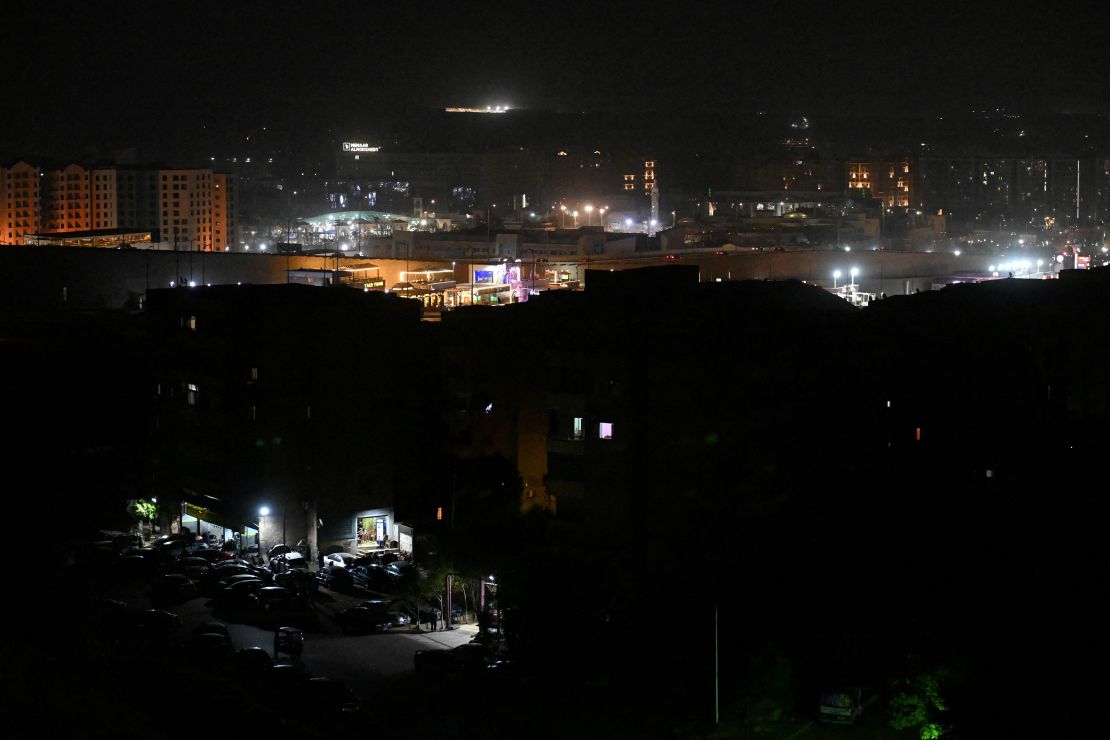
Whilst Egypt’s summer heat increases its electricity demand, it could also offer a solution. The south of Egypt, where Scatec’s new project is breaking ground is “in the magic solar belt,” said Elgendy. According to the Global Solar Atlas, Egypt has the fourth-highest solar PV (photovoltaic) potential of any country.
Historically, solar energy has been hampered by its intermittency — solar panels only work during the day and large-scale battery storage has been too expensive. However, falling battery prices, combined with the lower operational and installation costs of solar power means that projects that combine solar generation with battery storage, like Obelisk, could overcome this problem.
Because of its size and prime location, Obelisk, Elgendy said, “can demonstrate value for the rest of the region, for the rest of the world, that ‘solar plus batteries’ can take away this primary weakness.”
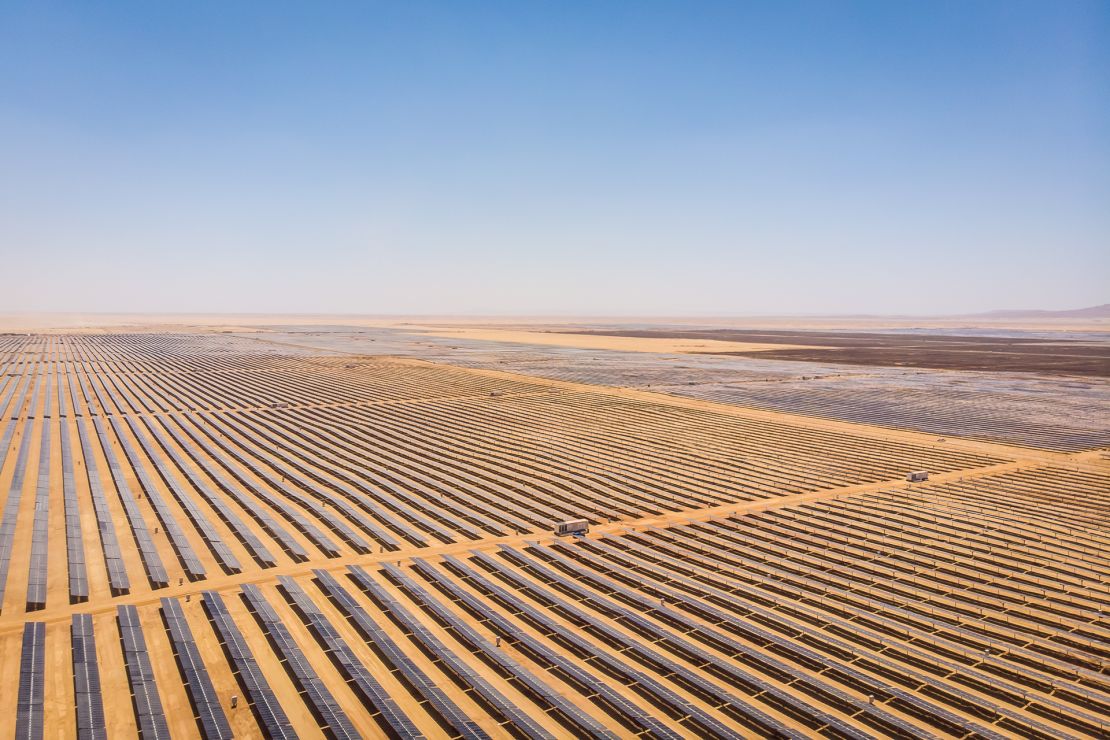
The cost of battery storage projects has dropped by 89% between 2010 and 2023, driven by growing production capacity, especially in China. This drop, Elgendy said, means that by 2027 solar plus battery plants will be “the cheapest form of (any kind of electricity) generation.” A report by the Global Solar Council said that the availability of energy storage is a “major driver for increased solar installations globally.” However, whilst global battery storage capacity hit 363 gigawatt hours (GWh) in 2024, Africa only has 1.6 GWh.
Whilst battery prices have dropped and solar is cheap to operate, these plants still need large investments to build, and the money can be hard to find, Elgendy said, adding that the “risk premium” of investing in the developing world means that these projects are more expensive to build in Africa. The continent attracted only 3% of global energy investments in 2024.
Obelisk will receive $479.1 million in funding from the European Bank for Reconstruction and Development, the African Development Bank, and British International Investment. The first 561 MW of solar power and the full battery capacity are due to be online in the first half of 2026, and reach the full 1.1 gigawatt capacity by the end of the year.

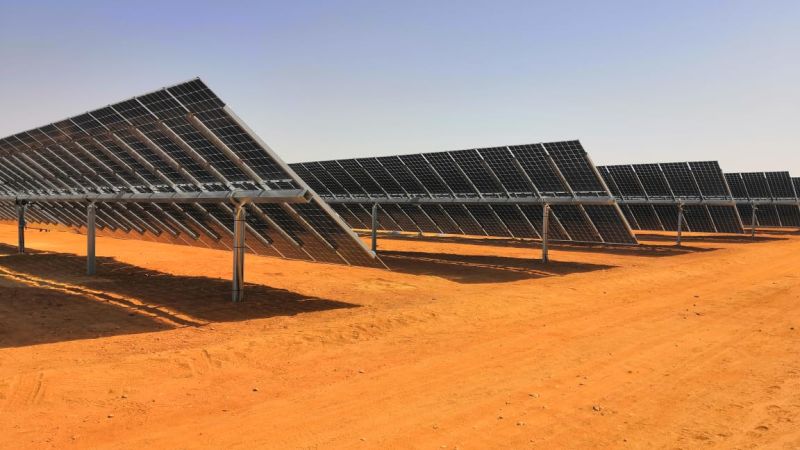

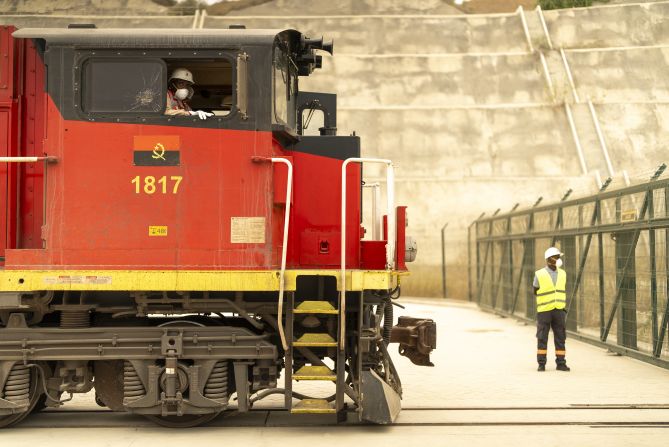 Feasibility studies are underway for a second, more ambitious phase of the project, which will expand the railway 800 kilometers (500 miles) to Zambia.” class=”image__dam-img image__dam-img–loading” onload=’this.classList.remove(‘image__dam-img–loading’)’ onerror=”imageLoadError(this)” height=”2832″ width=”4240″/>
Feasibility studies are underway for a second, more ambitious phase of the project, which will expand the railway 800 kilometers (500 miles) to Zambia.” class=”image__dam-img image__dam-img–loading” onload=’this.classList.remove(‘image__dam-img–loading’)’ onerror=”imageLoadError(this)” height=”2832″ width=”4240″/>


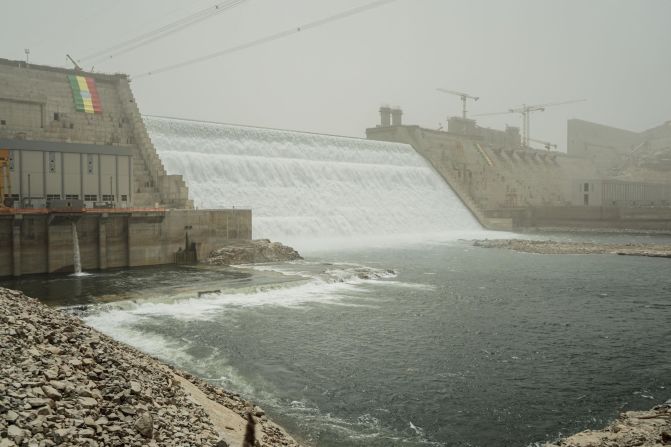 Grand Ethiopian Renaissance Dam (GERD) is one of Africa’s biggest infrastructure projects. Built on the Blue Nile River near Ethiopia’s border with Sudan, the $5 billion dam will generate 6,000 megawatts of electricity annually. The project aims to turn Ethiopia into Africa’s biggest hydroelectric exporter.
Grand Ethiopian Renaissance Dam (GERD) is one of Africa’s biggest infrastructure projects. Built on the Blue Nile River near Ethiopia’s border with Sudan, the $5 billion dam will generate 6,000 megawatts of electricity annually. The project aims to turn Ethiopia into Africa’s biggest hydroelectric exporter.
 capacity. It’s not just bad for the economy — fuel shortages mean Nigeria suffers frequent power cuts. But Africa’s richest man, Aliko Dangote, has built an oil refinery covering 2,635 hectares, which he says will solve Nigeria’s fuel problem. At full capacity, Dangote Petroleum Refinery will be able to process 650,000 barrels a day. In 2024, the refinery began production of diesel and aviation fuel.” class=”image__dam-img image__dam-img–loading” onload=’this.classList.remove(‘image__dam-img–loading’)’ onerror=”imageLoadError(this)” height=”1080″ width=”1920″ loading=’lazy’/>
capacity. It’s not just bad for the economy — fuel shortages mean Nigeria suffers frequent power cuts. But Africa’s richest man, Aliko Dangote, has built an oil refinery covering 2,635 hectares, which he says will solve Nigeria’s fuel problem. At full capacity, Dangote Petroleum Refinery will be able to process 650,000 barrels a day. In 2024, the refinery began production of diesel and aviation fuel.” class=”image__dam-img image__dam-img–loading” onload=’this.classList.remove(‘image__dam-img–loading’)’ onerror=”imageLoadError(this)” height=”1080″ width=”1920″ loading=’lazy’/>
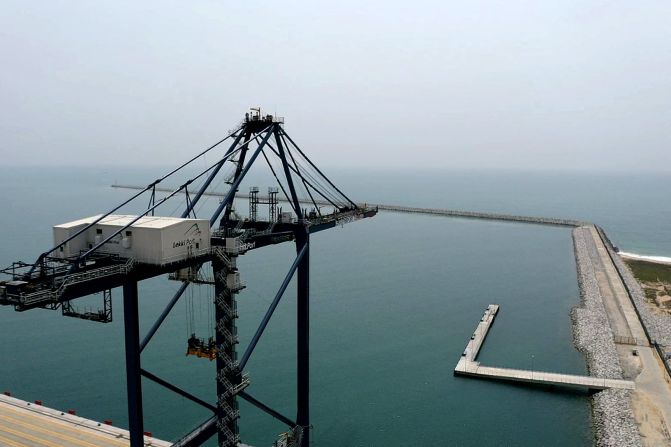 since April 2023, the Lekki Deep Sea Port in Lagos state, Nigeria, is the deepest port in the country and can support 2.7 million 20-foot containers (TEU) annually.” class=”image__dam-img image__dam-img–loading” onload=’this.classList.remove(‘image__dam-img–loading’)’ onerror=”imageLoadError(this)” height=”1088″ width=”1632″ loading=’lazy’/>
since April 2023, the Lekki Deep Sea Port in Lagos state, Nigeria, is the deepest port in the country and can support 2.7 million 20-foot containers (TEU) annually.” class=”image__dam-img image__dam-img–loading” onload=’this.classList.remove(‘image__dam-img–loading’)’ onerror=”imageLoadError(this)” height=”1088″ width=”1632″ loading=’lazy’/>
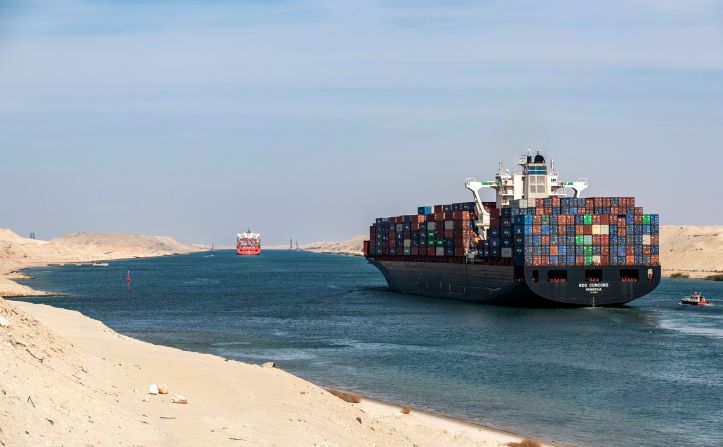 expansion in 2015 to increase trading potential, and it has paid off, with a significant rise in revenue. Further developments to deepen and widen the southern stretch of the canal are underway, following the grounding of the Ever Given container ship in 2021 which blocked the canal for almost a week.” class=”image__dam-img image__dam-img–loading” onload=’this.classList.remove(‘image__dam-img–loading’)’ onerror=”imageLoadError(this)” height=”3195″ width=”5170″ loading=’lazy’/>
expansion in 2015 to increase trading potential, and it has paid off, with a significant rise in revenue. Further developments to deepen and widen the southern stretch of the canal are underway, following the grounding of the Ever Given container ship in 2021 which blocked the canal for almost a week.” class=”image__dam-img image__dam-img–loading” onload=’this.classList.remove(‘image__dam-img–loading’)’ onerror=”imageLoadError(this)” height=”3195″ width=”5170″ loading=’lazy’/>
 went live in 2023. It has the potential to increase internet speeds five-fold in some countries and reduce data costs, according to research commissioned by Google.” class=”image__dam-img image__dam-img–loading” onload=’this.classList.remove(‘image__dam-img–loading’)’ onerror=”imageLoadError(this)” height=”1067″ width=”1600″ loading=’lazy’/>
went live in 2023. It has the potential to increase internet speeds five-fold in some countries and reduce data costs, according to research commissioned by Google.” class=”image__dam-img image__dam-img–loading” onload=’this.classList.remove(‘image__dam-img–loading’)’ onerror=”imageLoadError(this)” height=”1067″ width=”1600″ loading=’lazy’/>
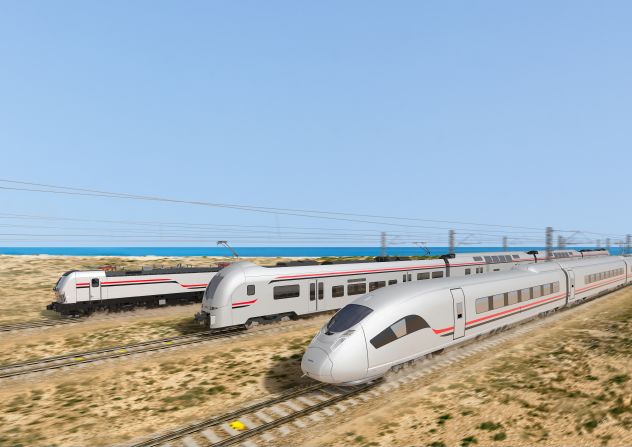 high-speed rail were announced in January 2021, and the contract for 2,000-kilometer (1,243-mile) rail system was awarded to Siemens Mobility. When built, the railway will link 60 cities across the country. (Pictured: a rendering of future fleet carriages.)” class=”image__dam-img image__dam-img–loading” onload=’this.classList.remove(‘image__dam-img–loading’)’ onerror=”imageLoadError(this)” height=”3054″ width=”4320″/>
high-speed rail were announced in January 2021, and the contract for 2,000-kilometer (1,243-mile) rail system was awarded to Siemens Mobility. When built, the railway will link 60 cities across the country. (Pictured: a rendering of future fleet carriages.)” class=”image__dam-img image__dam-img–loading” onload=’this.classList.remove(‘image__dam-img–loading’)’ onerror=”imageLoadError(this)” height=”3054″ width=”4320″/>
 largest commercial port, Walvis Bay processes five million tons of cargo every year. A $300 million, five-year project has seen the port more than double its capacity for container units and reduce waiting times for ships. Its new container terminal, built on 40 hectares of reclaimed land, was announced to be fully operational in September 2020. ” class=”image__dam-img image__dam-img–loading” onload=’this.classList.remove(‘image__dam-img–loading’)’ onerror=”imageLoadError(this)” height=”1006″ width=”1890″/>
largest commercial port, Walvis Bay processes five million tons of cargo every year. A $300 million, five-year project has seen the port more than double its capacity for container units and reduce waiting times for ships. Its new container terminal, built on 40 hectares of reclaimed land, was announced to be fully operational in September 2020. ” class=”image__dam-img image__dam-img–loading” onload=’this.classList.remove(‘image__dam-img–loading’)’ onerror=”imageLoadError(this)” height=”1006″ width=”1890″/>